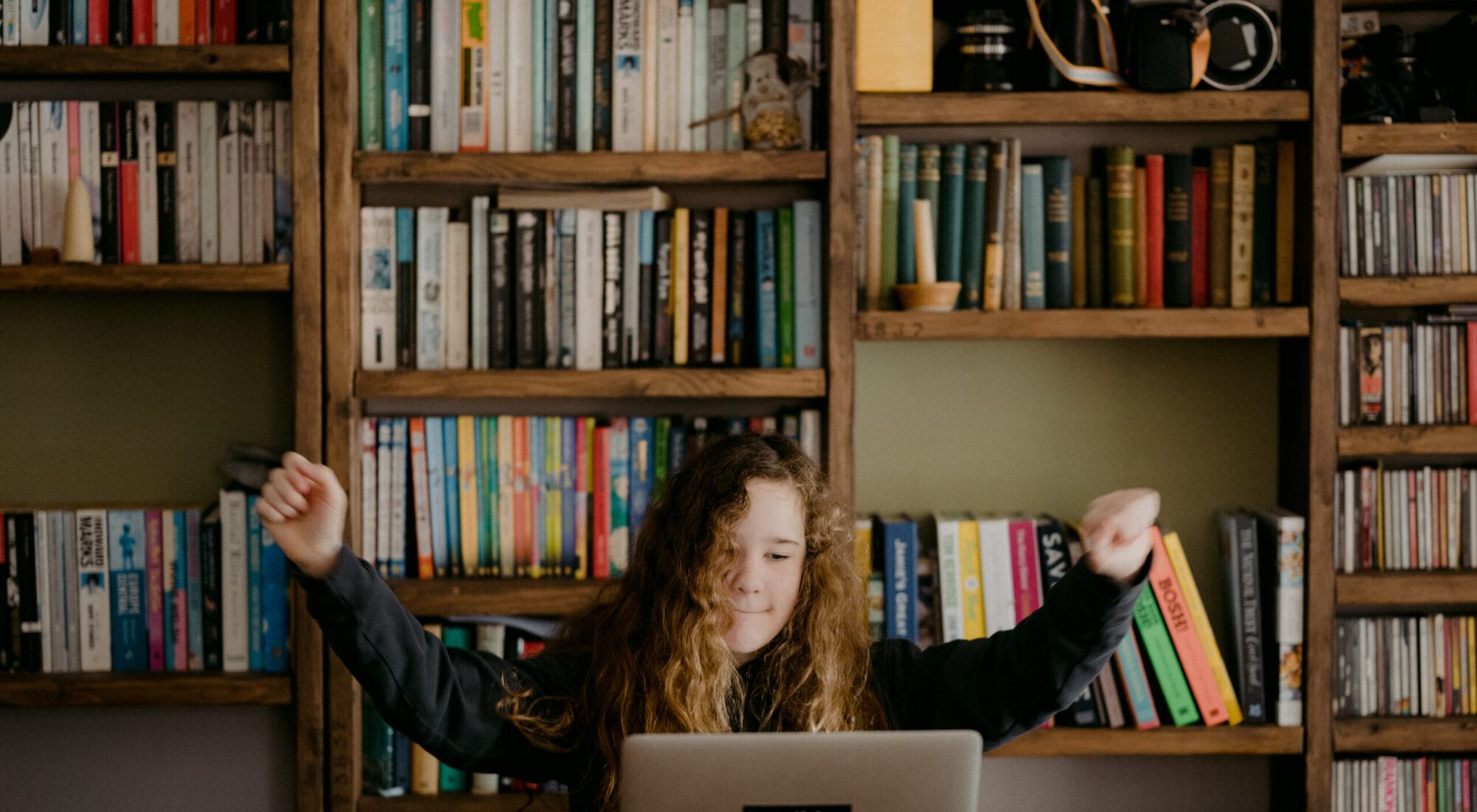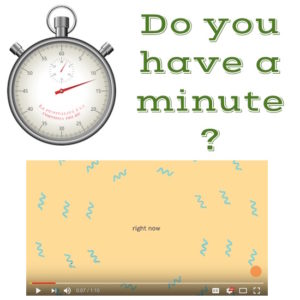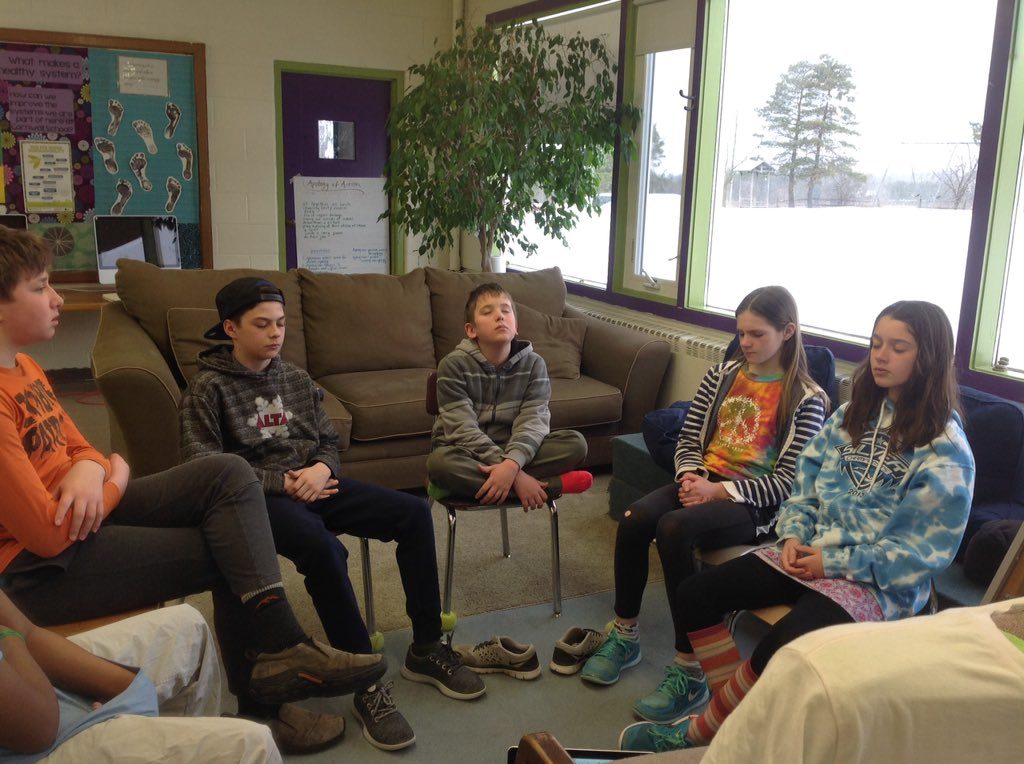The #everydaycourage of doing nothing
 As we cultivate more self-direction in students, their lives get more complicated. They have a greater responsibility to themselves and their success.
As we cultivate more self-direction in students, their lives get more complicated. They have a greater responsibility to themselves and their success.
How can we nurture the whole student as they grapple with becoming agents of their own education?
As we ask more of students these days, how do we support them in answering those new demands?
“Wait, you mean we get to learn about anything we want?” A sea of incredulous faces stared at me with confusion and trepidatious excitement as I introduced Curiosity Projects at Cornwall School, in Cornwall, Vermont. It was our first round of student-led projects.
At first, students were thrilled at the prospect of following their curiosity and developing their expertise in an area they chose. But it didn’t take long for the complaining to commence.
My students began to realize that leading their own learning was a lot more work than sitting at a desk and doing a worksheet. They had to think, they had to decide, they had to struggle, they had to sit with uncertainty. They wanted out. They wanted to go back to the old, easy(er) way, where I as the teacher told them what to do, and they did it.
One strategy that shows promise is bringing mindfulness practices into the classroom
Mindfulness is defined as paying attention in the present moment without judgment. Originally known as meditation, early pioneers of using the practice in schools chose the term ‘mindfulness’ to make a distinction between this secular practice and other religion-based forms of meditation. But these days, as the practice is becoming more widespread, both terms are becoming acceptable.
One common way to engage in the practice is sitting in stillness and silence, focusing on the rising and falling of the breath, and then returning the focus to the breath when you inevitably realize your attention has strayed. That’s it. Simple, but not always easy.
Practices like mindfulness can support students as they grow into more autonomous and competent learners.
Mindfulness can create space for learners to observe and know their own minds, and cultivate fertile soil for personal growth. This work nurtures in students a deeper understanding of themselves and cultivates in them the ultimate transferable skill: the ability to consciously respond to life with presence and grace.
But, you’re just sitting there
It takes #everydaycourage to create a space for sitting in silence together. Because, to an outsider, it would look like you’re doing…nothing. But that’s precisely what you’re doing. Or aren’t doing.
Either way.
The benefits are huge: just ask my students.
Looking at the research, mindfulness seems like a panacea: improving practically every aspect of life. Early research is showing that mindfulness helps students focus better, reduces stress, improves physical well-being and academic performance, and supports social-emotional growth. (It does wonders for adults, too.)
I’d read the research. But I was still astounded by the impact this work had on my students. I’ve been dabbling in bringing mindfulness into my work with students for the past ten years in a variety of ways. Last year, I took a deeper dive, and from January through May my sixth graders and I sat (that’s what you call it when you practice mindfulness because you’re, you know, just sitting there) for 10 minute sessions, four days a week. I surveyed the students about their experience with the practice.
They reported that:
- 85% had taken a “mindful moment” of their own accord.
- More than half practiced outside of school on their own at least once.
- 40% practiced regularly on their own at least a couple of times a week.
- 70% felt a strong, positive impact from the practice, including effects such as:
- Increased patience with siblings
- Being easier or more forgiving of themselves
- Taking their time to do things
- Feeling calmer
- Improved sleep
- Better ability to focus and improved performance in sports
- Feeling less impulsivity
- Slower to get angry or frustrated
The return on investment is huge. Sometimes I wondered if those weren’t the most important ten minutes in our day. Hey teacher, side note: All those great things happen to teachers when we practice, too. And who of us couldn’t use a little more balance in our lives?
Ok, so what do I do again?
There are numerous ways to bring mindfulness into the classroom, from formal curricula to on-the-spot ‘mindful moments’ (like focusing on the sound of the teacher’s chime until it fades to settle after a transition between classes). But for the technologically-inclined, there are some amazing apps now available to facilitate the practice. These apps are great for those new to mindfulness practice, as they can take the lead on guiding the session. But even if you’ve had formal training, these new apps can really bring confidence and excitement.
- Calm Topping my list because of their free classroom subscription is Calm. This app has a plethora of guided meditations, including the “Daily Calm,” Calm Kids collection, and a fantastic series based on The Tao of (Winnie the) Pooh (my students loved this last series and we had great discussions surrounding the practice).
- Headspace Featuring former Buddhist monk Andy Puddicombe, this one is my favorite for my personal practice. When you register for Headspace’s “Take 10”you get the first 10 days free. After that, a subscription is required. Headspace also has a great YouTube channel with a ton of free videos on many aspects of the practice. Check out how “your mind is like a blue sky,” below (click the image for the link).
- Insight Timer – This app is not only free, but offers both timed silence using bells, as well as a ton of guided meditations. The meditation timer is quite useful once you have learned to practice and are ready for more silence.
- Smiling Mind – From Australia, this app is on a mission to make mindfulness accessible to all, and offers a series of age-specific programs, including classroom mindfulness curricula for each age band. The curriculum includes lessons plans, guided meditations, and take-home material.
Just like anything we teach, it’s important that we’re familiar with the content
While it’s fine to learn the practice alongside our students, it helps if we have a head start. I suggest giving yourself a week or so head start. Both Calm and Headspace have free 7- or 10-day (respectively) introductions. It’s also always a good idea to preview any guided meditation sessions you plan to use with students so that there are no surprises (trust me).
Are you using mindfulness practices in your classroom or life?
What strategies or tools have you found helpful?




Thank you for your sharing. I am worried that I lack creative ideas. It is your article that makes me full of hope. Thank you. But, I have a question, can you help me?